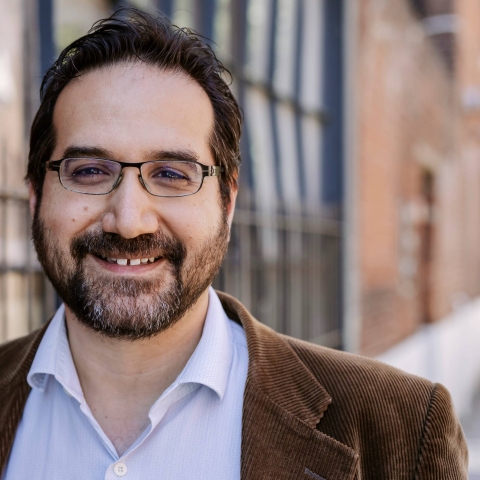

A new project aims to find kilonovae - the cosmic explosions of neutron stars and black holes colliding in distant galaxies
Members of the public are invited to take part in a brand new citizen science project to identify cosmic explosions in real-time.
‘Kilonova Seekers’ aims to find kilonovae - the cosmic explosions of neutron stars and black holes colliding in distant galaxies.
Volunteers will be asked to play ‘spot the difference’ using data from the two Gravitational-wave Optical Transient Observer (GOTO) telescopes.
Researchers from the universities of Portsmouth and Warwick are leading the project to engage the general public.
Dr Lisa Kelsey, from the University of Portsmouth’s Institute of Cosmology and Gravitation, said: “We are excited to launch Kilonova Seekers and welcome the public into the remarkable world of real-time exploration of cosmic explosions. Citizen science is crucial for our work because GOTO generates significant volumes of data, which is taxing for even machine-learning based methods.
“Humans are excellent at dealing with uncertainty and admitting when they don’t know, and identifying ‘anomalies’, novel examples which have never been seen before. Often this is where the most exciting objects are hiding!”

Artists’ impression of a binary neutron star merger leading to a kilonova, the target of Kilonova Seekers. Image credit NSF/LIGO/Sonoma State University/A. Simonnet
The GOTO telescopes are located on opposite sides of the planet - on La Palma, in Spain’s Canary Islands, and Australia’s Siding Spring Observatory.
This allows for constant observation by the GOTO system, which surveys the entire sky every two to three days, taking far more data than can be analysed by GOTO scientists alone.
The scientists monitor alerts from gravitational wave detectors LIGO, Virgo and KAGRA, which trigger GOTO telescopes within 30 seconds to begin searching the sky. Any images taken are then shared with the public via the Zooniverse, the world’s largest and most popular platform for people-powered research.
Dr Kelsey added: “The significance of this project cannot be overstated, as the sheer volume of data acquired by the telescopes necessitates additional assistance to comb through it all.
“Our telescopes survey the entire sky every night (weather depending), so new images will be uploaded to the project daily for citizens to investigate - with most not yet seen by human eyes. “This represents a fantastic way for the general public to be involved with real-time, cutting-edge scientific research.”
We are excited to launch Kilonova Seekers and welcome the public into the remarkable world of real-time exploration of cosmic explosions. Citizen science is crucial for our work because GOTO generates significant volumes of data, which is taxing for even machine-learning based methods.
Researcher Thomas Killestein, from the University of Warwick, added: “We're excited to launch this project, and bring the joy of discovery in time-domain astronomy to the public - with GOTO surveying the sky every night, there's so many gems to be found hiding in the data, that we can only find with the help of citizen scientists. Searching like this, with data arriving shortly after being taken has not been done before and is sure to lead to exciting and novel discoveries.
“This is true real-time astrophysics: with every close of the shutter, new discoveries will stream in. You could discover the next kilonova, or perhaps more excitingly new kinds of transients we haven't seen before!”
To participate in Kilonova Seekers, simply visit the Zooniverse platform and join a community of passionate individuals eager to contribute to the advancement of astrophysics.



